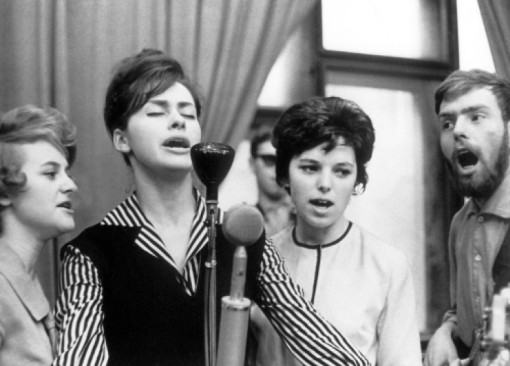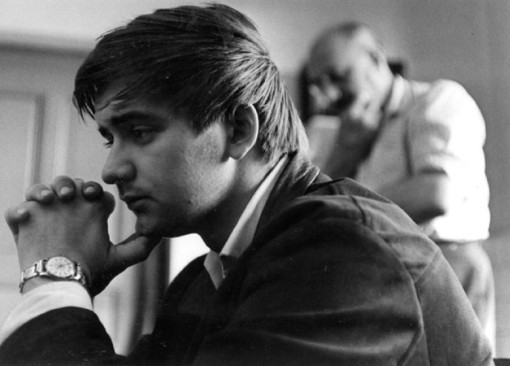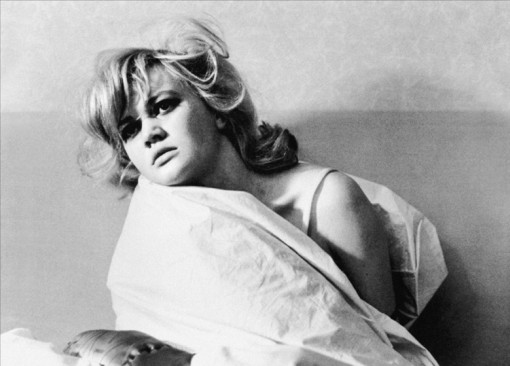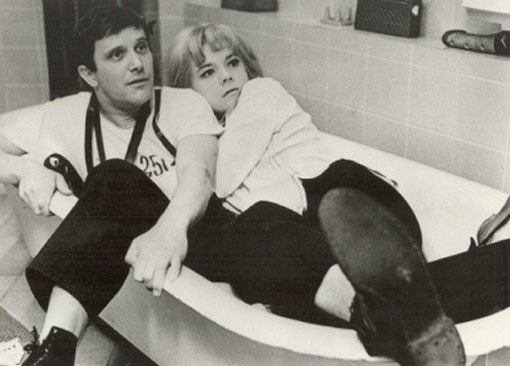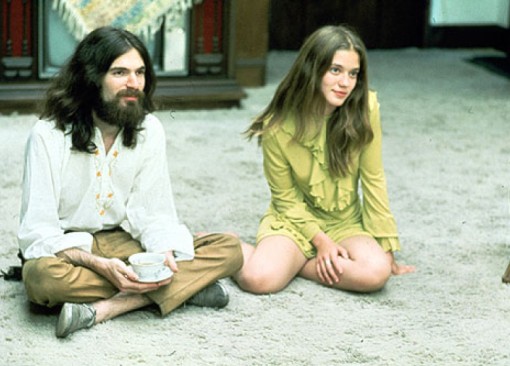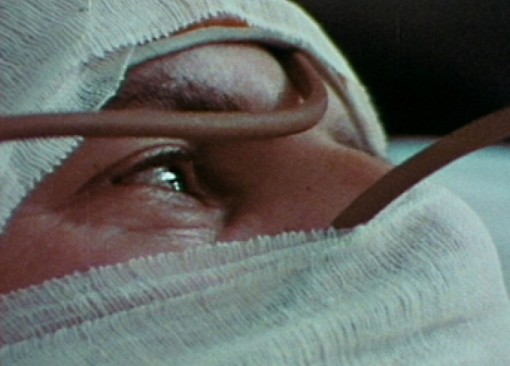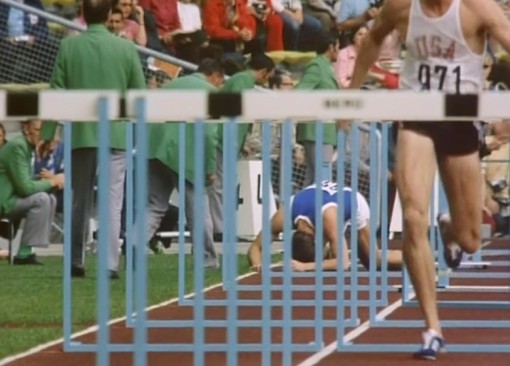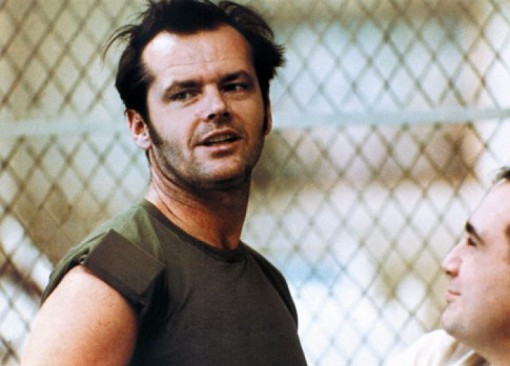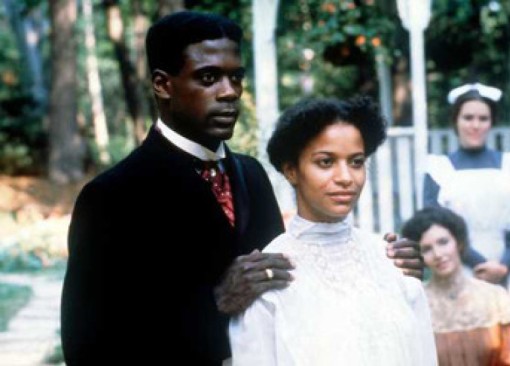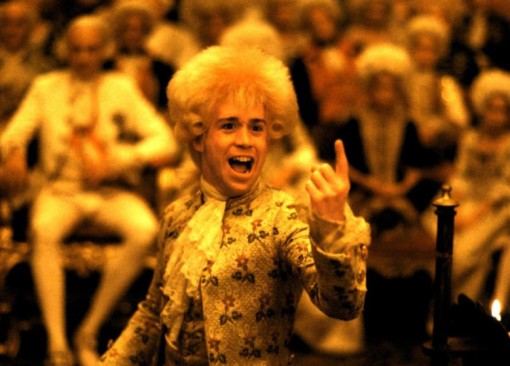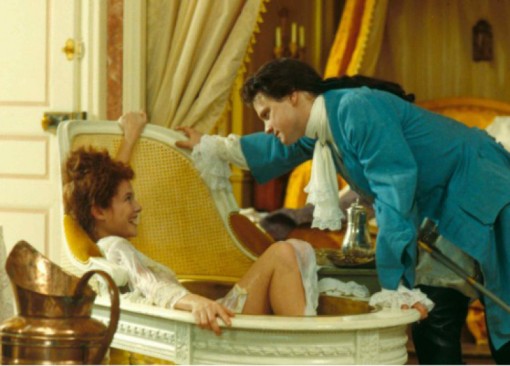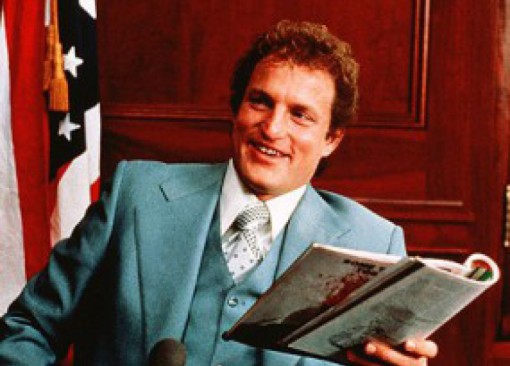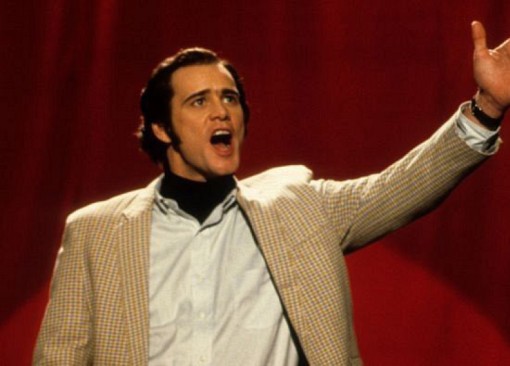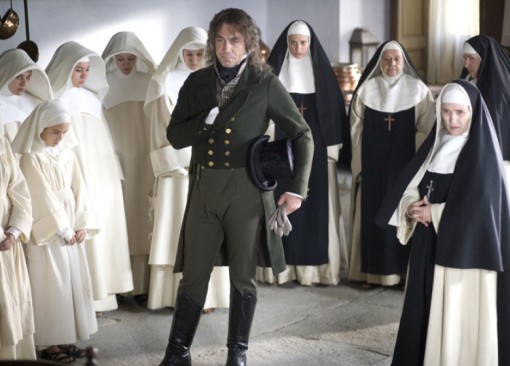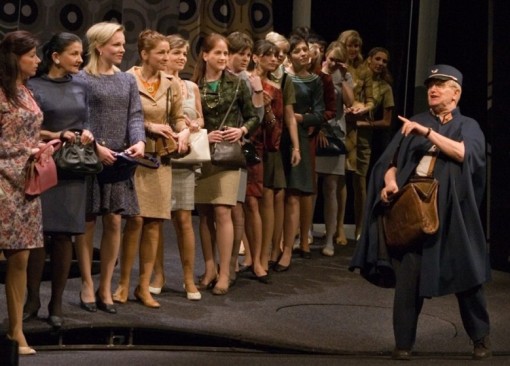One camera in one setting, one attic and eight young directors – the result is a unique Dadaistic collage of seven short sketches. The original task for each filmmaker was to keep each short under three minutes, to set it in one hotel room, and to include the sentence “I miss Sonja Henie." This experimental film was shot over a single night at the international film festival FEST in Beograd in 1971.
About the movie
According to legend, this film project came together when director Karpo Godina asked seven other directors who were with him at the moment to create one film in which each director would be responsible for a three-minute short. The sentence “I miss Sonja Henie” was to be used as a tribute to the famous Norwegian figure skater who was then a popular actress in Hollywood.
Milos Forman’s short is a brief, piquant and grotesque film starring himself and Buck Henry (who functioned as co-director, actor and screenwriter).
Their segment is a tribute to American screenwriter and novelist Dalton Trumbo’s film “Johnny Got His Gun”.
In the short, Johnny, an old veteran without arms and face who is deaf and almost blind, lies in his bed covered with bandages. A doctor (played by Buck Henry) examines the patient with a nurse and Johnny’s wife.
The doctor claims that it is Johnny’s last chance to write down his message to the world, and there is only one way to do it. He asks the nurse and Johnny’s wife to perform a short striptease (which we can’t see). The patient gets excited, and with a pencil fastened to his erect penis writes “ I miss Sonja Henie.”
According to Forman, the film is “a beautiful black student joke.” The twenty minute compilation film ends with a black and white short film “Sun Valley Serenade” (1941) starring Sonja Henie as herself.
Trivia
- Director and cameraman Karpo Godina waited in the hotel lobby for hours to ask the directors to work on the film. Each director was given two pages of the script. Godina thought that a few would not want to be involved, but all seven agreed.
- Karpo Godina belonged to the Yugoslav art movement Black Wave, which was similar to the famous Czech New Wave. Most of the 1970s independent Yugoslav filmmakers tended to be a part of the movement.
- The attic Godina chose as the location was very close to the Beograd Theatre so the filmmakers were able to borrow costumes and props. The flat was so small that the lightning only worked in one part of it - in the entrance corridor and a tiny part of the room.
- Buck Henry made Forman play the role of Johnny because Forman made Henry stand naked on a table inhis film “Taking Off”.
- Milos Forman didn’t mind the “humiliation” caused by playing the part of Johnny because even though he was wrapped in bandages he didn’t have any lines, and during filming he drank cognac through a straw.
- Karpo Godina originally planned to screen the seven sketches one after another, but in the end he decided to cut them together. The only exception is Milos Forman and Buck Henry’s segment.
- According to the local authorities, this film was inspired by the “decadent West” and was therefore banned in Yugoslavia following its release. The creators saw it many years later in 2007 at the Bam Rose Cinema at the Brooklyn Academy of Music.
- Sonja Henie (born April 8th, 1912, Oslo – died October 12th, 1969) was a Norwegian figure skater and film star. During the 1920s and 1930s she was a seven times figure skating European Champion, ten times World Champion and she won three medals at the Olympic Games. Later she became a successful actress in Hollywood. She was one of the highest paid movie stars and had her own ice show. She died of leukemia at the age of 57.
Milos Forman about the movie
- “I received an invitation to the film festival in Beograd. Yugoslavia was sort of a renegade, but still – it was a communist country. Therefore I wasn’t too enthusiastic about it. In those days from time to time the Czech secret police hijacked emigrants and took them back to their homeland where they were taken to court. I was afraid of that, but a friend of mine, Dusan Makavjev, convinced me that they were going to take care of me and everything would be fine. And everything really went fine, I could walk around and I watched the movies, until the day, when at about 2 a.m. someone suddenly started knocking at my door - and there was Dusan saying: “Do not ask me anything, pack your luggage but leave it here. We are going to take care of it later. At five o’clock you must be ready at the back door of the hotel. I’ll pick you up.” I asked why and he told me to have a look out of the window. Two cars which the secret police had been using at that time were parked there. It was easy to understand that they hadn’t come to admire the beautiful architecture. Therefore I left the hotel at five in the morning using the back door, and Dusan gave me a lift to the railway station, as he didn’t dare to take me to the airport. On the train I was accompanied by his friend till I crossed the Austrian border“.
Making of
Making Sonja Henie
30 min., color
Director: Karpo Aćimović Godina
© 1972 Neoplanta Film
Locations
Yugoslavia (today’s Republic of Serbia)
-
Belgrade
- The entirety of the movie was shot in a rented attic apartment in the centre of Belgrade.
Credits
| Directed by | Tinto Brass |
| Puriša Djordjević | |
| Milos Forman | |
| Buck Henry | |
| Dušan Makavejev | |
| Paul Morrissey | |
| Bogdan Tirnanić | |
| Frederick Wiseman | |
| Wrtitten by | Snoopy (Branko Vučićević) |
Milos Forman part |
|
| Directed and Written by | Milos Forman, Buck Henry |
Starring |
|
| Doctor | Buck Henry |
| Patient | Milos Forman |
| Nurse | Catherine Rouvel |
| Nurse | Brooke Hayward |
| Director of Photography | Karpo Acimović-Godina |
| Edited by | Karpo Acimović-Godina |
| Screenplay | Karpo Acimović-Godina, Branko Vučićević |
| Cinematography by | Ivan Ćirković |
| Dušan Ninkov | |
| Andrej Popović | |
| Waltz | Émile Waldteufel |
| Music by | Emile Waldteufel |
| Recorded by | New York Philharmonic Orchestra |
| Eastman Kodak Westres CF1 | |
| Courtesy of Yugo Kinoteke | |
| © 1972 Neoplnta Film | |
| Released through Twentieth Century-Fox Film Corporation | |





